

The next stop on our big China Oddyssey was the beatiful city of Chengdu in Southwest China. Our speed train from Chongqing to Chengdu reached the speed of 199km per hour! This was definitely the fastest moving train that I have ever been on. The countryside zoomed past through the windows along with the countless new construction sights sprouting up all over China. When we reached Chengdu the temperature had dropped to a lovely 34 degrees which made walking and exploring this lovely town so much easier.
The first stop for mom and I was Wu Hou Shrine the Memorial Temple of Marquis Wu. This Shrine is perhaps Chengdu’s most popular tourist attraction for Chinese and foreign visitors and was packed with people.
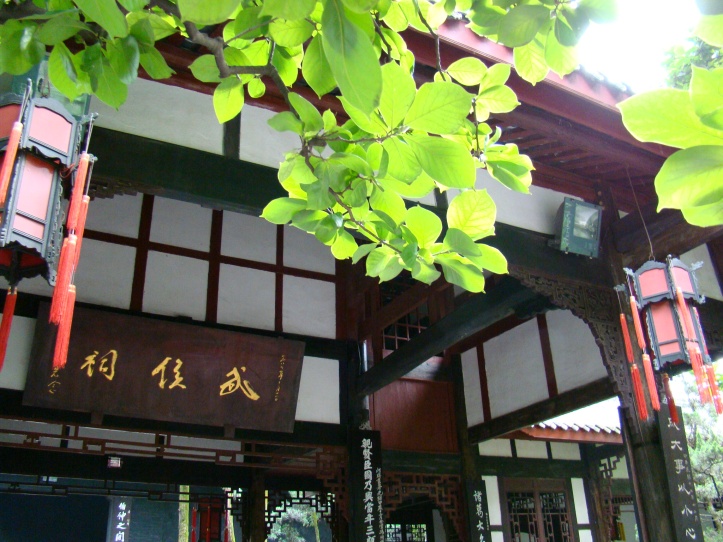
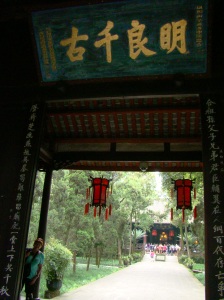
This huge park and temple that covers 37,000 square meters of paths and woods is located in the south of Chengdu. The temple was originally built by Li Xiong of the Western Jin dynasty (265 – 316AD). Basically, the Wuhou Shrine is a memorial to Zhuge Liang (181-234), a general and prime minister of the Three Kingdoms period who was renowned and respected as much for his wisdom and loyalty as he was for his military brilliance. Receiving equal billing at the shrine is Liu Bei, the benevolent Emperor of the Shu Kingdom who had enlisted Zhuge Liang as his ‘Minister of War.’

From the main gate we crossed through a courtyard filled with koi ponds to reach the courtyard of the memorial temple housing the 50 heroes of the Shu Kingdom. The 50 heroes are displayed behind glass around the four sides of the courtyard. The seated figures have long hair and traditionally long beards or goatees, and are adorned with colorful robes.

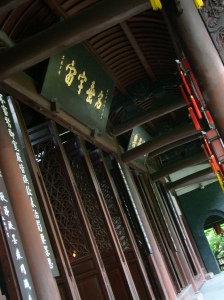
The Wuhou Temple features three main sections. The Temple of the Han Dynasty Emperor Zhao Lie, the Wuhou Shrine dedicated to the 50 heroes of the Shu Kingdom, and the Temple of the Three Righteous Men. All these temples are surrounded by old cypresses and classical red walls and filled with the fragrance of burnt incense.

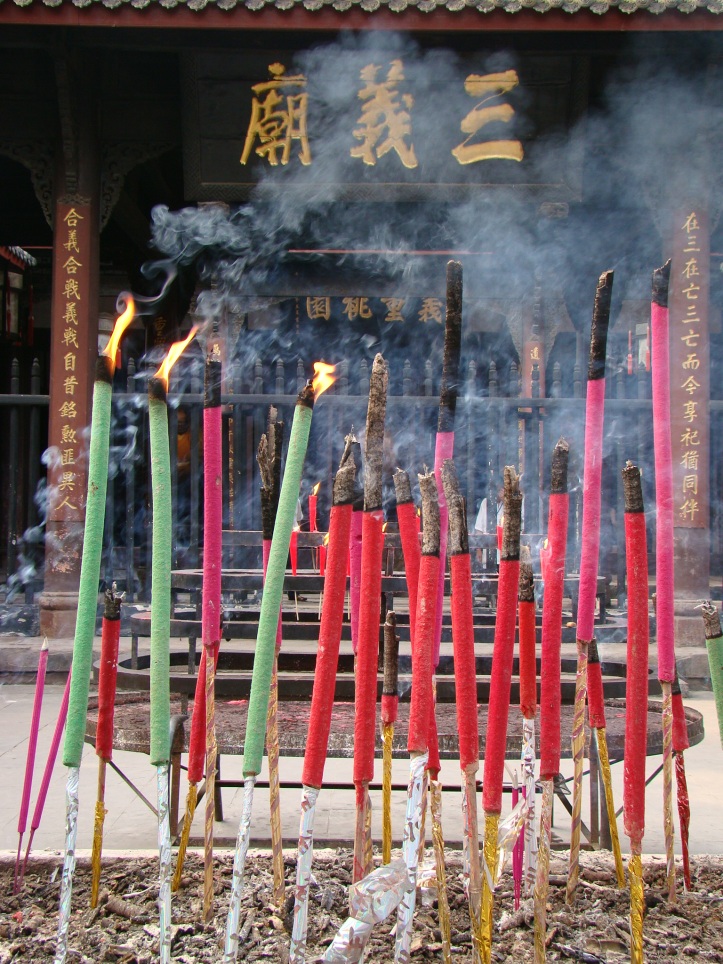
The Wuhou Temple Park is actually quite large and we spent the whole afternoon wandering around the park. The park’s gardens are extremely well-kept and simply gorgeous to look at. The park maintains Bonsai, Peach, Pine, and Bamboo trees just to name a few. There is a turtle pond, a goldfish pond, and of course a few teahouses.
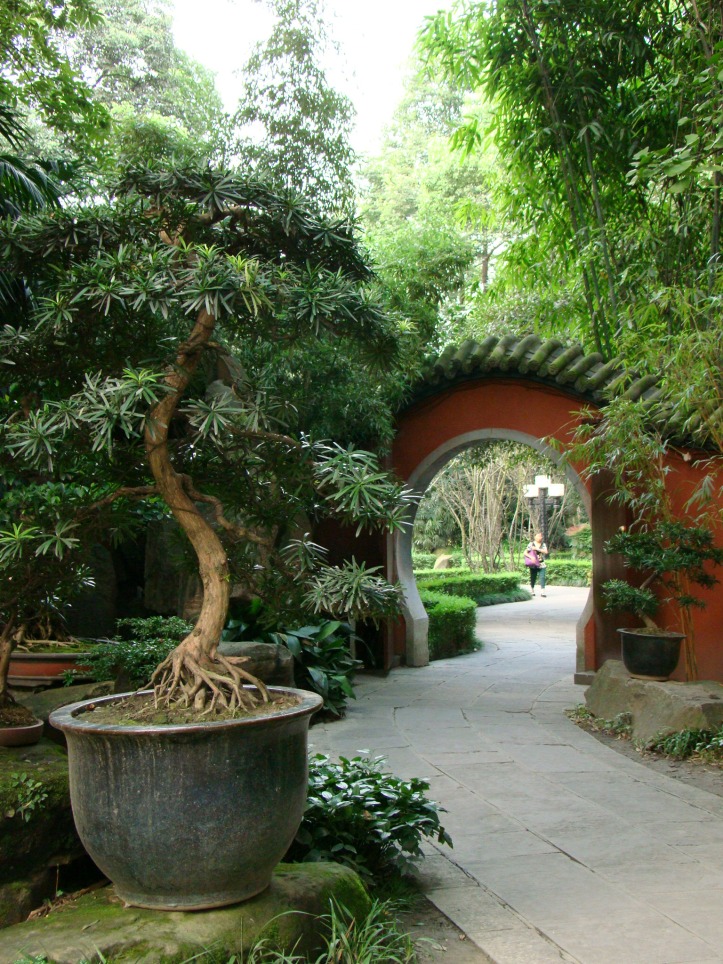
The temple grounds are filled with elegant Moon Gates, circular openings in the garden walls that act as pedestrian passageways. Moon Gates have many different spiritual meanings for every piece of tile on the gate and for the shape of it. The sloping roofs of the gate represent the half moon of the Chinese Summers and the tips of the tiles of the roof have talisman on the ends of them.
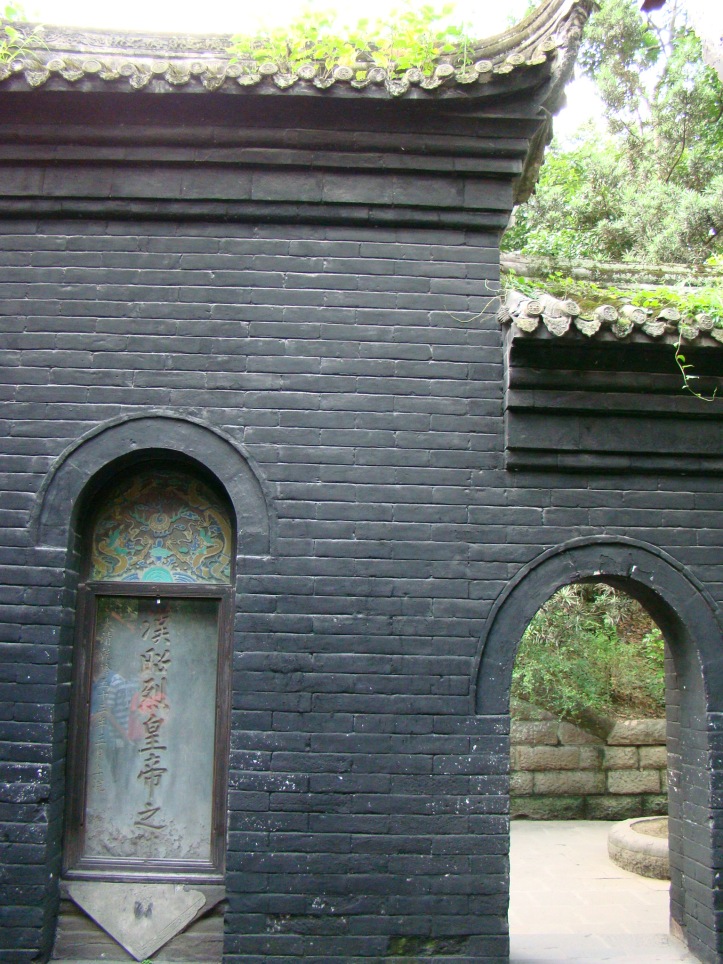
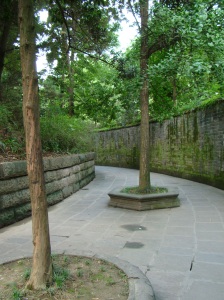
In the middle of the Shrine grounds is a mausoleum, said to be the final resting place of Liu Bei the first ruler of the State of Shu. It has, through history, been called the Huiling Mausoleum. A stone pillar inscribed with “The Tomb of Zhao Lie, Emperor of Han” still stands in front of the tomb, erected in the 53rd year of the Qian Long reign (1788) of the Qing Dynasty. This mausoleum is buried under a mound of earth and enclosed in n circular wall. The earth covering on the tomb is 12 meters deep and the tomb is circled by a round, ancient brick wall with a circumference of 180 meters. Grass and greenwoods cover the tomb’s earth slopes.
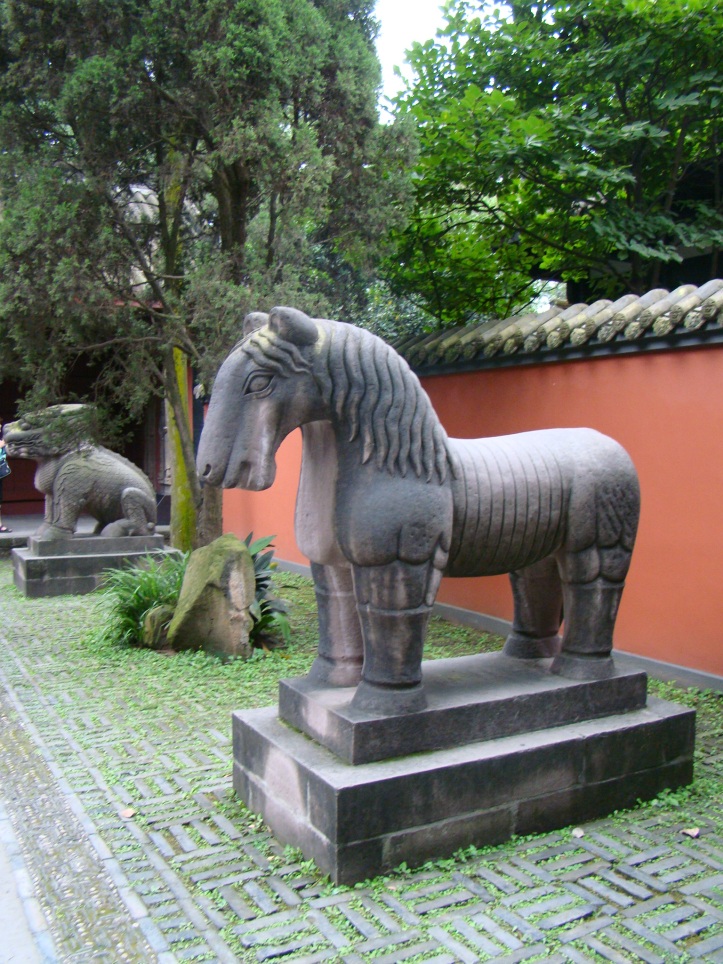
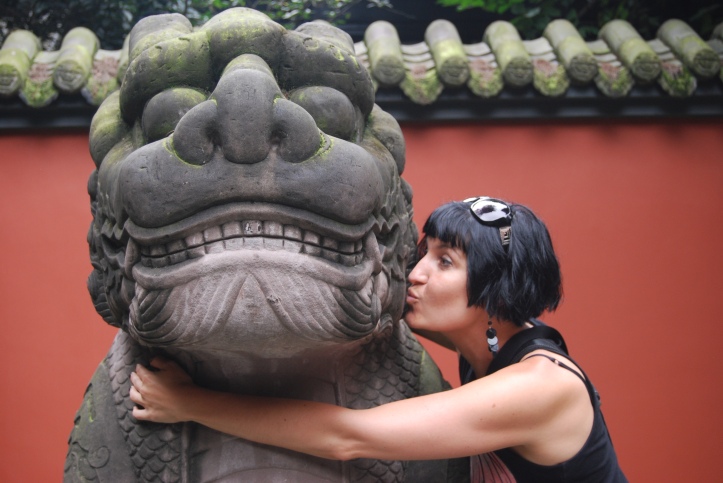
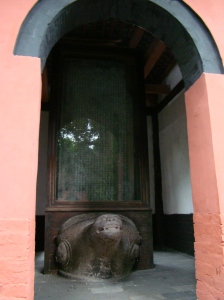
The temple is furnished with many inscribed stone tablets, the most famous being the Tablet of Triple Success of the Tang dynasty (618 – 907). The three successes are: an article written by Pei Du, a famous minister of the Tang Dynasty who served four emperors in succession, calligraphy by Liu Gongquan, one of the most brilliant calligraphers in Chinese history, and a statement about the morality and achievements of Zhuge Liang.
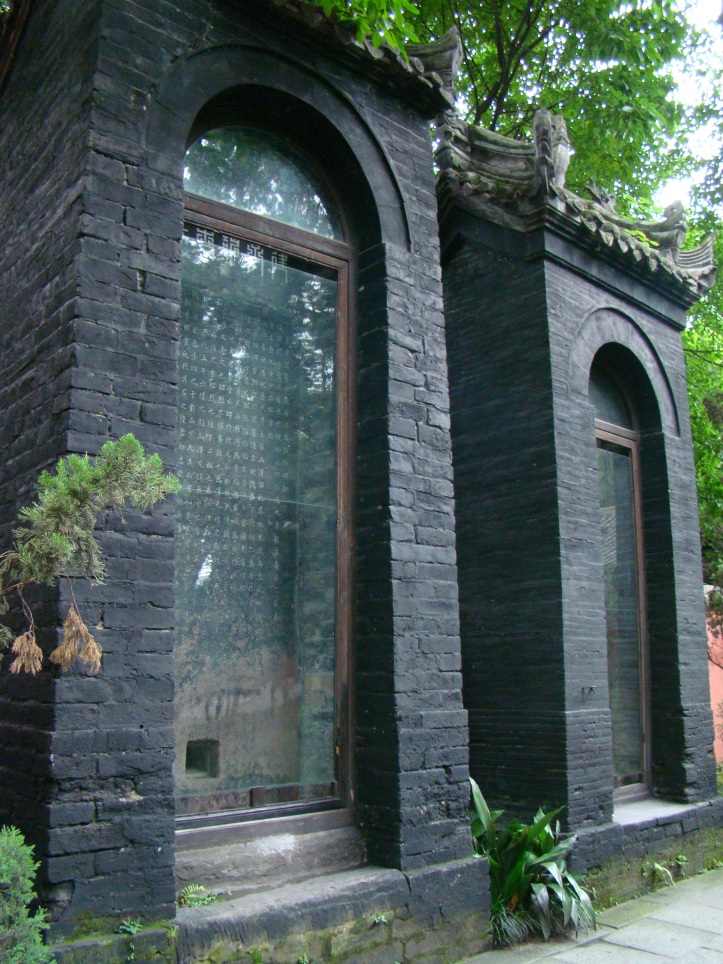
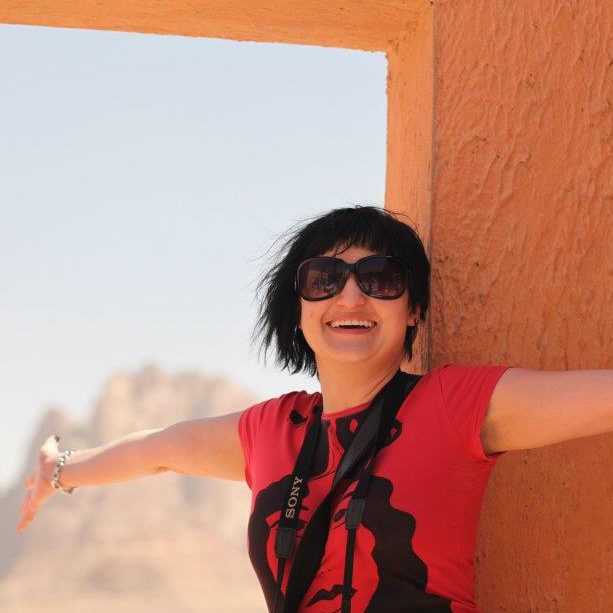
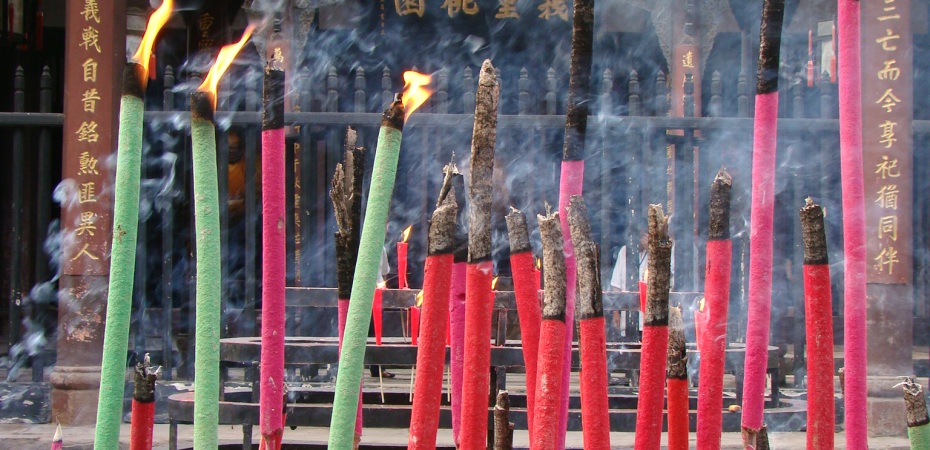





















P.S. thanks for your visits!!!!
LikeLike
You’re more than welcome!!
LikeLike
Janaline, just your visits, seeing your radiant smile and the happiness alive within and then viewing your pictures makes a moment shared with your blog so very wonderful. Your genuine smile is always so priceless my sister God bless!
LikeLike
Thank you for that very lovely compliment Wendell!! I love sharing my adventures and so glad if it can make someone day!
LikeLike
Your picture with the sacred lion make me smile, Jana. The angle make the lion grinned happily when you kissed and hugged him 🙂
LikeLike
I enjoyed that walk through Wuhou Shrine although I think 34 was a trifle hot, 24 degrees would have been much more bearable. The pictures were well worth looking at, I could almost smell the incense at the Shrine, especially when blown up on screen.
LikeLike
Thanks Chrisstov! It was quite hot but we had just traveled from Chongqing where it was nearly 40 so it felt a lot cooler for us!
LikeLike
Gorgeous pics! I guess you visited the pandas in Chengdu too.
The HSR in Taiwan reaches up to 300 km/hr but the highest I saw on the display board was 299 km/hr. It was quite the experience, as I am sure traveling to Chengdu was for you!
LikeLike
Thanks! Yes, it was quite exciting traveling at such extreme speeds, I cant even imagine 299km/h!!! Yes, We did visit the pandas and that was an amazing experience!!
LikeLike
Lovely photos. Looks like it was well worth a visit.
LikeLike
Thanks Carl! It was definitely a lovely afternoon spent exploring these beautiful gardens and shrines.
LikeLike
As usual, I have enjoyed your photos 🙂
LikeLike
Thank you!
LikeLike